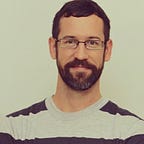My Top Philosophy Pieces of 2019
This brief list includes both articles and books, and draws from modal metaphysics, logic and philosophy of religion, philosophy of language, and black aesthetics. Though my area of specialization (AOS) is metaphysics, my areas of competence (AOC) include philosophy of language and philosophy of religion, and I may in time include black aesthetics as well. For now, these are all areas of interest, and I read most of them over the course of taking seminars or doing research for my PhD project.
Like any philosopher, I have to explain what I mean by that catch-all, ambiguous word ‘top’ (and ‘of’). These are the pieces that impressed me the most this past year. They were not necessarily published in 2019, but read by me in 2019. I’m not seeing a whole lot of end-of-year lists that include works like these (‘a whole lot’ = 1), so I thought I’d throw down some thoughts on some works I really enjoyed. These pieces clarified things for me, made me look at ideas or topics in a new and helpful way, and connected ideas that, prior to reading, had been disjointed for some reason. I’m separating them into five posts to make the word-length more manageable, and below is the first post of five.
5. Christopher Menzel, “In Defense of the Possibilism-Actualism Distinction”. (Full disclosure: Menzel is one of my advisors, and I’m a better philosopher for it.) I was able to look at an early draft of this paper that included a good chunk of historical data about the bifurcation of being (existence/subsistence), data that goes back to the medieval period. Here’s some brief and all-too-quick background to the paper: let’s say it’s (broadly logically) possible that I have a 10-year-old son (I actually don’t). Then (using a bit of predicate and modal logic) there is something that is my possible 10-year-old son. So there are things that are possible but not actual. The view that endorses these kinds of possible beings has been called possibilism, and the view that denies their being has been called actualism. Williamson, following a groundbreaking paper by Edward Zalta and Bernard Linsky titled “In Defense of the Simplest Quantified Modal Logic”, spawned a new way to think about these modal questions, where instead of denying the existence of possible beings, the actualist can affirm the existence of possible beings but deny their concreteness. And such a view has been termed necessitism, because it affirms that necessarily everything necessarily exists (which can be proven using the simplest quantified modal logic), but also affirms that only some things are concrete and other things are contingently non-concrete (i.e. non-concrete but could be concrete). That’s a clunky summary because I’m ignoring key parts of the debate and poorly translating other parts, but the importance of Menzel’s article shows the coherence of the possibilism-actualism (P-A) distinction, contra Williamson who believes the P-A distinction should be replaced by the necessitist-contingentist (N-C) distinction. Menzel further shows that, though a coherent distinction, there is in fact a problem with the way the P-A distinction has been interpreted, and proposes that the real difference between the two distinctions — P-A and N-C — involves what one believes about a thing’s essential properties. The necessitist must believe that there is such a thing as a possible 10-year-old son that is (contingently) non-concrete, and therefore something that has no concrete properties yet is still a human in some way; something that is essentially human yet exemplifies none of a human’s essential properties. We typically think that essential properties of humans include having a body of some kind, the capacity to think, etc., and this generalizes for any concrete thing and its essential properties. So Menzel shows that the necessitist has some splainin’ to do in giving an account of modal ontology that doesn’t completely violate our intuitions about what essential properties are, and also shows that Williamson’s objection of the P-A distinction was too dismissive. By giving a thorough and detailed analysis of the current competing models for modal ontology, Menzel so helpfully refocuses the core of the debate around essential properties and how to think about those in relation to the modality of objects.
4. Edward Zalta, “Essence and Modality”.
3. Aaron Cotnoir, “On the Role of Logic in Analytic Theology: Exploring the Wider Context of Beall’s Philosophy of Logic”.
2. Language Turned on Itself: The Semantics and Pragmatics of Metalinguistic Discourse, Herman Cappelen and Ernie Lepore.
- Paul Taylor, Black is Beautiful: A Philosophy of Black Aesthetics.
